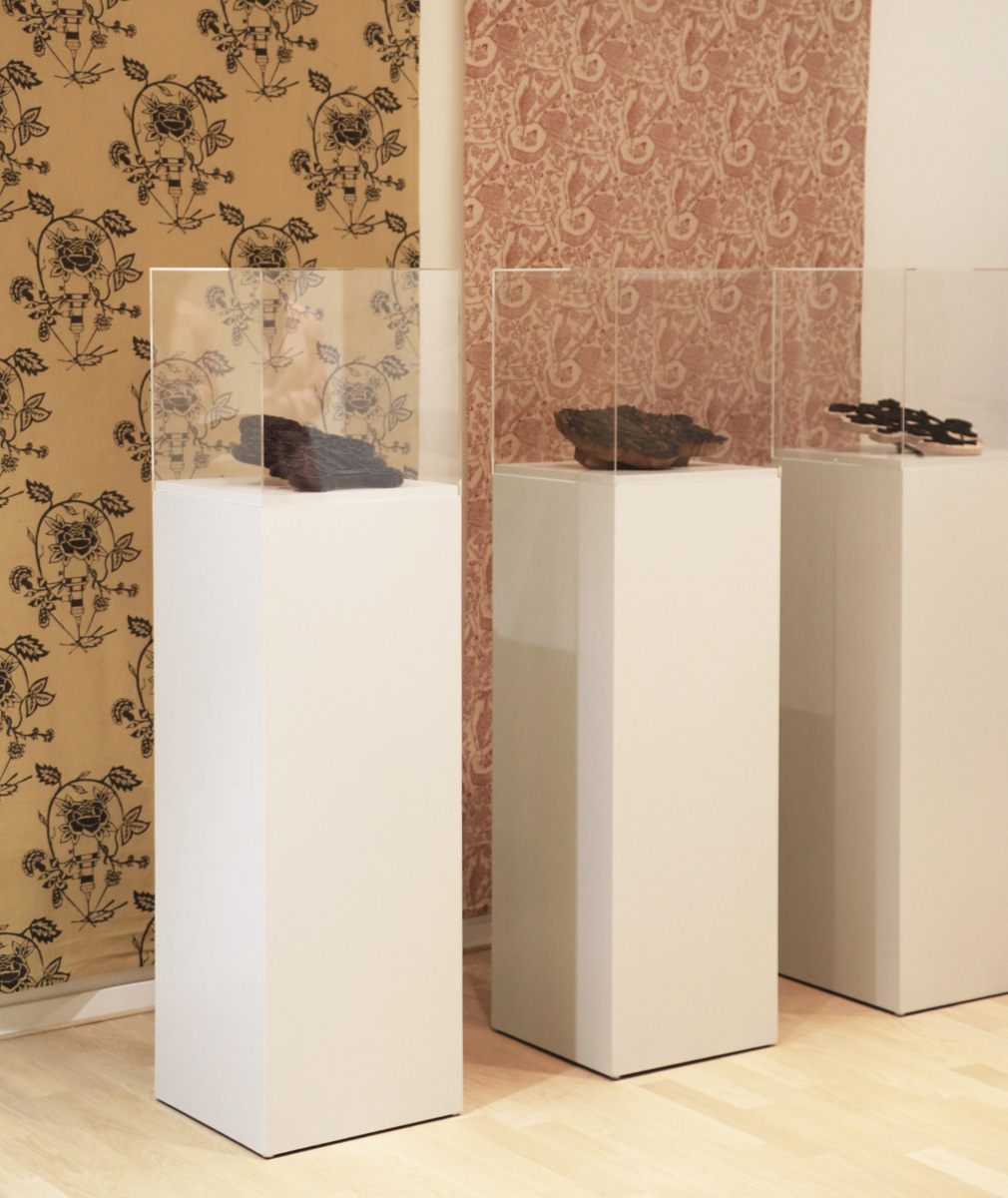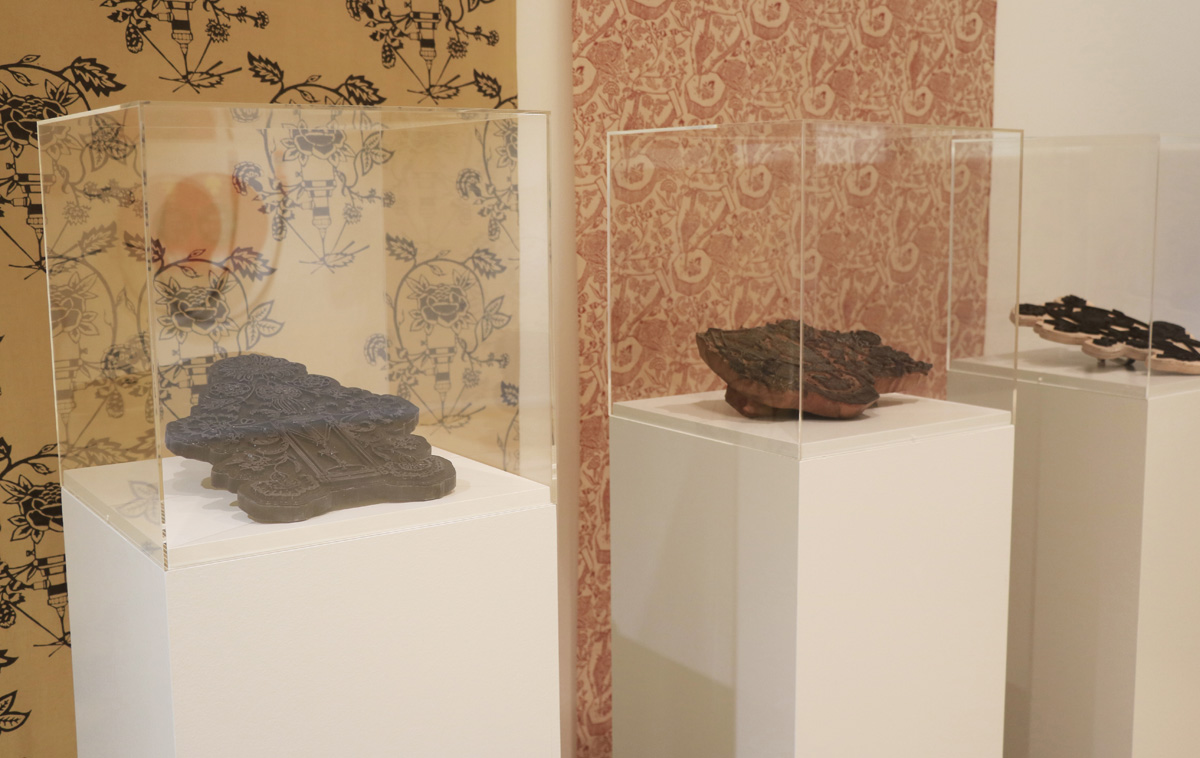Dutch Ministry Social Affairs and Employment
2018 January 23
Printing Blocks
Combining old crafts with modern techniques
Supported by Textiel Factorij Simone Post started a research project into block printing. This century old Indian craft was also applied on ‘typically’ Dutch fabrics (called ‘sitzen’) in the 17th century, when there was a lively trade route between India and The Netherlands. Traditionally the wooden blocks used in this technique are cut by hand. This is highly labour-intensive and therefore a rapidly disappearing craft.
Together with Indian artisans, Simone researched how to use new techniques to make the prints. One printing block was cut by hand, as it was done traditionally, three others were lasercutted, cnc-milled and 3D printed. In the patterns she incorporated the Indian flowers used on the 17th century Dutch ‘sitzen’ fabrics, as well as illustrations of the technique used to make each stamp. The unique qualities of each technique were compared with each other and with the traditional method.
Textiel Factorij retraces the textile trade between India and the Netherlands and its influence on Dutch textiles in the 17th and 18th century. Together with artists and designers Textiel Factorij explores the mutual heritage in the textile trade of both countries, this in order to preserve crafts traditions and knowledge and to try and realise new collaborations.
The project ‘Printing Blocks’ is exhibited in the building of the Dutch Ministry of Social Affairs and Employment in The Hague
Related Posts
Lecture Moscow Design Museum
2020 February
Ambassador Design Contest Cor Unum
2020 February
Open day, Keilewerf x Art Rotterdam, NL
2020 February






